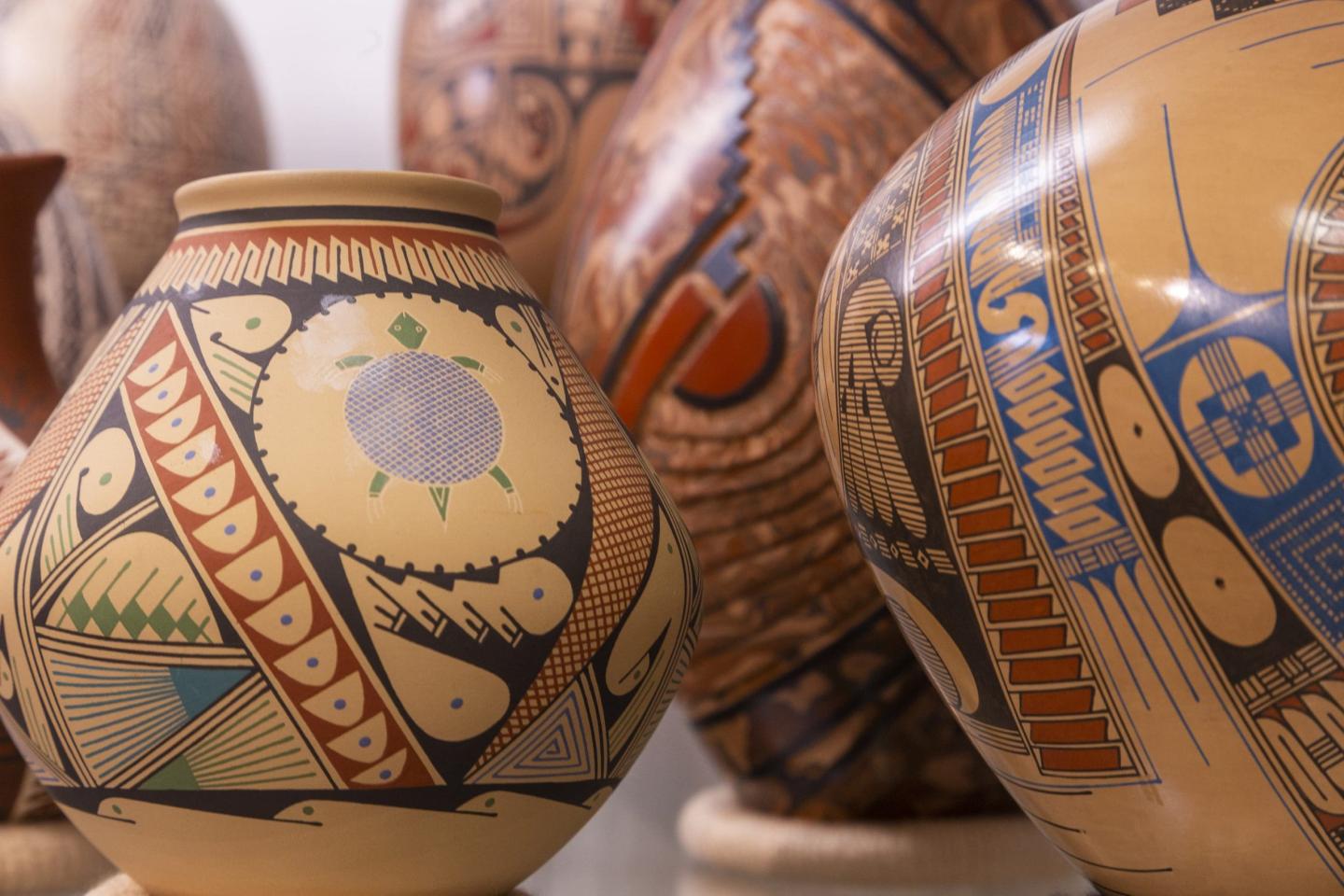
The Ants Go Marching On: 30 years of Atta mexicana in Organ Pipe Cactus National Monument
It was mid-October, and it was still hot in the Sonoran Desert. The land was beyond parched. The creosote leaves looked crispy, as if they hadn’t had a good drink of water in ages.
The leafcutter ants Atta mexicana, however, seemed to be doing fine in the dry conditions. It was too warm for foraging, but the occasional soldier—large, formidable, almost three quarters of an inch long—patrolled the tunnel entrances to their nests.
A. mexicana are found from El Salvador to Organ Pipe Cactus National Monument in southwestern Arizona, on the border with Mexico. A. mexicana are “living on the edge of their range at Organ Pipe,” said Dr. Alex Mintzer, the researcher studying these leafcutter ants in the monument. His work is funded by the Western National Parks Association.

A. mexicana live at the mercy of their unforgiving desert environment, a place where rain seldom falls. The desert shrubs and trees that the ants rely on are stretched to their limit, relying on the water they had saved during the limited summer monsoons.
But “the ants are pretty adaptable,” Mintzer said. They live along desert washes, leaving their massive nests in the cooler hours to collect leaves to cultivate the fungus that is necessary for their survival.
Leafcutter ants construct deep nests with intricate tunnels and chambers, where they take the leaves from creosotes and palo verde trees and chew them into a paste on which they grow the fungus. Each caste in the ant colony has a role. Some workers cultivate the fungus gardens, while others tend to the young and remove waste. The foragers cut leaves and carry the fragments back to the nest. The soldiers defend the colony from intruders.
All these castes work together to maintain the colony. While there are many workers, foragers and soldiers, there is only one queen. For the colony to survive, the queen must be kept healthy. She will produce the next generation of reproductive males and females, which will swarm with the coming of the monsoons and leave the nest to start new colonies.
Counting ants
First noticed at Organ Pipe Cactus National Monument in the 1940s, leafcutter ants have been surveyed regularly over the last 30 years. The first census took place in 1985, followed by surveys in 1996, 2005-2006 and 2015-2016. The information gathered during these censuses provides scientists with important insights into the biology of A. mexicana.
During each census survey, Mintzer and his assistants walked along 11 large arroyo channel systems. These arroyo systems were originally selected in 1985 based on National Park Service aerial imagery that showed good potential desert riparian habitat. In the most recent survey, Mintzer used this aerial imagery and GPS to navigate the arroyos where the ants live. He noted nest locations using GPS and recorded them in the monument’s mapping database.
Mintzer determined each colony’s age by the condition of the nest. Based on previous surveys, colonies are estimated to have life spans of 10 to 20 years. Younger nests can be identified by the sharply defined mounds of dirt the ants remove while excavating tunnels. Older nests have eroded dirt mounds with large dumps of fungal waste, which resemble dry coffee grounds, outside the entrances.
Even though these ants live at the northern edge of their range, they are thriving. Mintzer counted a whopping 83 nest sites throughout the southern area of Organ Pipe Cactus—a dramatic increase over the 25 active colonies identified in the 2005-2006 survey.
The colonies, while adaptable, do fluctuate in number. The original 1985 survey revealed only 38 active nest sites. The 1996 recensus located 46 nest sites.
Ants vs. the world
A. mexicana live in a high traffic area for smugglers, migrants and Border Patrol agents. The ants seek shelter along larger desert washes under ironwoods, mesquites and palo verdes, as do the humans in the area.
Their nests keep the ants relatively safe and undisturbed. “The ant nests are so deeply situated that you’d have to have high explosives and quite a desire to do something to destroy one of them,” Mintzer said. In fact, the underground nests are thought to be as voluminous as an Olympic-sized swimming pool.
Although the ants might be immune to human activities, they are affected by climate and predators. Their 2005-2006 slump might have been influenced by climate. In subsequent years a possible decrease in predators, such as lizards and birds, may have allowed the ants to flourish.
Research findings suggest that climate, including precipitation levels and patterns, is the determining factor in the increase (or decrease) of A. mexicana nesting sites. “Like most desert organisms, they don’t reproduce well every year,” Mintzer said. “They wait for the good years, and then a lot of reproduction happens, and in many years their reproduction is probably mediocre.”
In these years with heavy monsoon storms, the winged adults (alates) emerge en masse from the nest entrances, forming giant swarms in the early morning. The heavy rains signal that it is the right time for the winged ants to leave their nest to search for other winged ants. These swarms of reproductive males and females hope to encounter other individuals from unrelated colonies with which to mate. The reproductive females, if successful, will mate and find a suitable location under trees and shrubs to dig burrows and become foundress queens of their own new colonies. The males die shortly after they (hopefully) mate.
In recent years the ants have had great reproductive success because of good monsoon seasons. “The population is in great shape right now,” Mintzer said. But “if climate change accelerates and you get the extended droughts of the sort that were thought to drive the Anasazi out of the pueblos, then the forecast for the ants becomes grim.”
Atta mexicana as ambassadors
Mintzer is bringing attention to the leafcutter ants by sharing his research findings with the staff at Organ Pipe Cactus National Monument. In fact, interpreter Sardius Stalker didn’t have a clue about Atta mexicana until he met Mintzer’s research team. “Their caring about what it is they’re studying comes over to us, and we get to share that [with the public],” Stalker said.
Observing A. mexicana might even change some people’s minds about ants. “My philosophy on any ant was ‘These darn ants,’” said Stalker, stomping his foot on the ground. “Then I met these researchers and I met Atta mexicana, and I suddenly became fascinated with ants. They are neat creatures. These guys are peaceful farmers…. If you accidently step on and kill a few, they don’t swarm and attack you. They keep on workin’.”
Visitors are captivated by the ants. “We discovered a pathway that they created where they were foraging,” Stalker said. “Suddenly I had people my age running around like 8- to 10-year-olds looking for ants.”
If the climate changes and dry conditions persist, however, future visitors to Organ Pipe Cactus National Monument might miss out on observing a fascinating part of the Sonoran Desert.
By Naomi Pier



